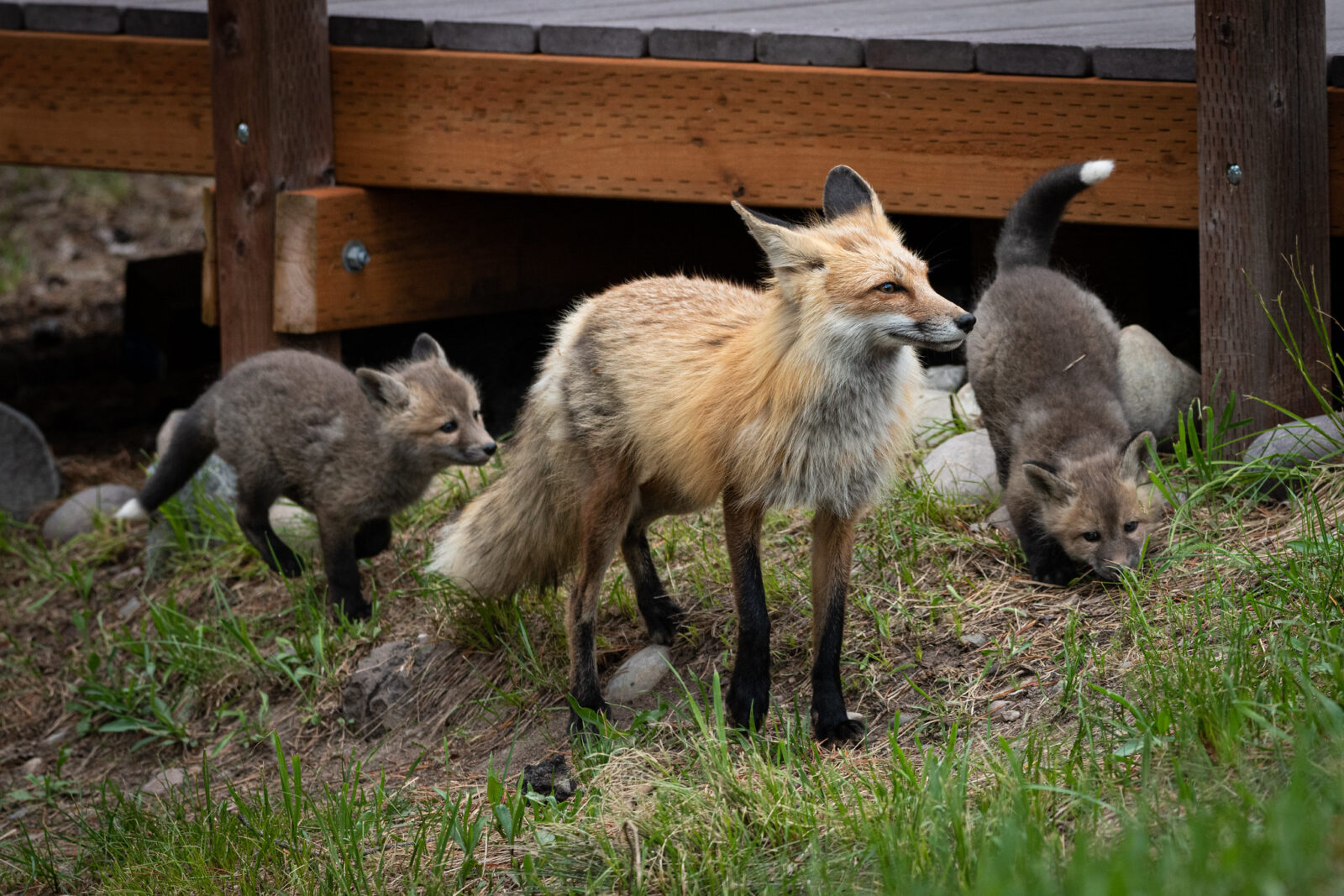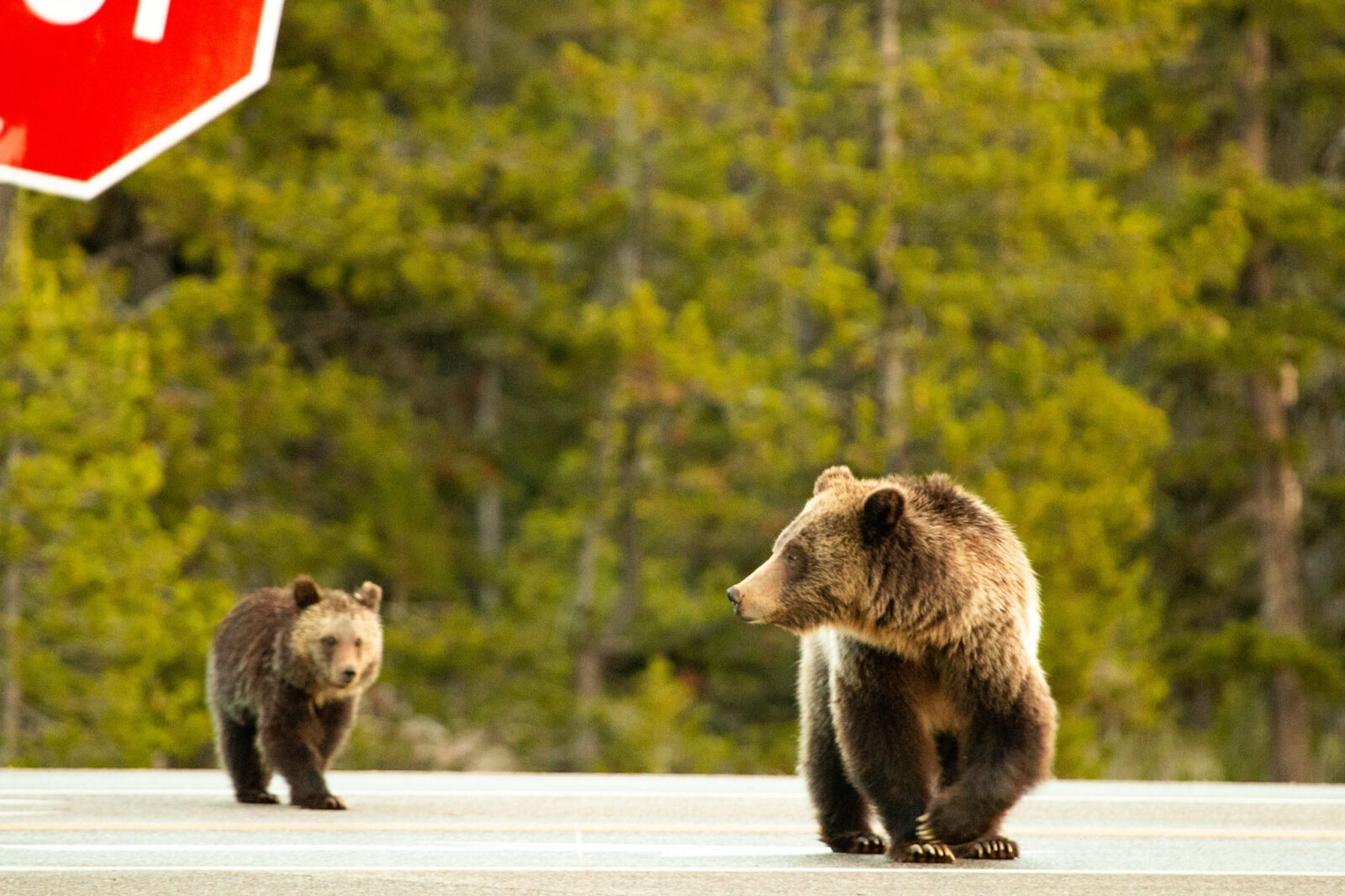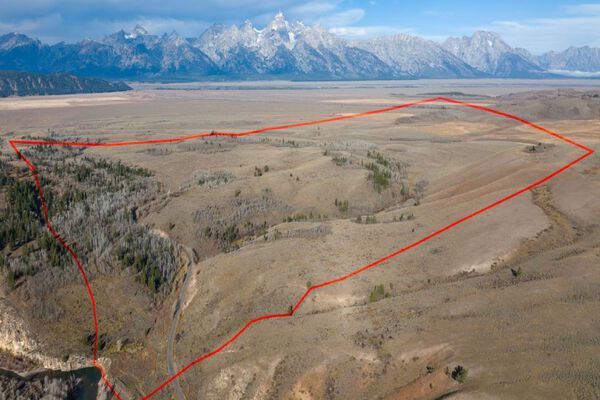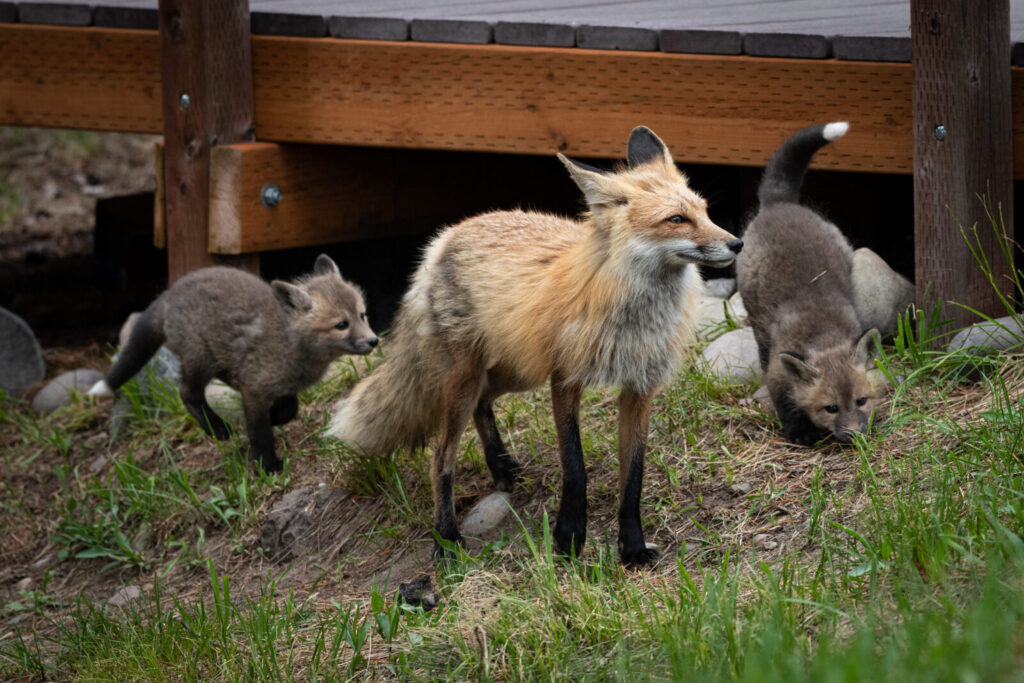
While May weather fluctuates, the season shifts perceptibly toward summer with warming temperatures, valley snowmelt, and greening vegetation. Park wildlife enjoy the increasing food security, which is vital to pregnant and nursing females. Spring is a time of increased activity as many animals are giving birth and raising young.
- Early-nesting birds such as bald eagles, ravens, great-horned owls, and others are mostly found in their nests in the spring, incubating newly laid eggs.
- Migratory birds, like osprey, American robins, mountain bluebirds, meadowlarks, and red-wing blackbirds, that left Jackson Hole in the fall, are returning in increasing numbers.
- Sandhill cranes, another returning migrant, mate for life and show strong fidelity to returning to the same nesting site. As they return to the valley, they are at their most vocal practicing unison calling, which strengthens their bond. They will build mound nests and share incubating duties.
- Wolves, foxes, and coyotes can be found out and about, localizing around their den sites and tending to pups and kits who will soon be making their first exploratory appearances.
- In creeks and tributaries, native cutthroat trout initiate spawning as water levels rise with spring runoff.
- Beavers give birth to one to four kits inside their lodges as ponds melt out. The new kits share the lodge with their parents and yearling beavers born the previous year.
- Bighorn sheep in the Tetons move off their high elevation winter ranges to mid-elevations where they can access nutritious vegetation as it greens-up.
- The migration of elk and bison from the National Elk Refuge into Grand Teton National Park continues. Since riverbanks and east-facing slopes melt first, elk typically follow these open areas where new vegetation is sprouting as they slowly move north and eventually on to higher elevations. Some elk will migrate to southern Yellowstone National Park.
- Moose and elk calving seasons have begun.
- While bears have been slow to emerge this year, the last to leave their dens—grizzly and black bear females with cubs—are out and about. Those with cubs-of-the-year are only making small movements so that their tiny cubs can keep up.
- Over the past few weeks, bears have been making increased appearances in the park, delighting visitors lucky enough to catch glimpses of them. A grizzly bear with three 2-year-olds, a grizzly bear with a yearling, independent grizzly bears, and a few black bears have been observed.
- Last week, the Interagency Grizzly Bear Study Team released the 2023 grizzly bear population estimate for the Greater Yellowstone Ecosystem. Just over 1,000 grizzly bears are estimated to roam the ecosystem, a remarkable conservation success story and a great testament to the dedicated efforts of numerous agencies, local communities, and individuals in securing a bright future for the population.
As wildlife are rearing their young, it is critical to give these animals plenty of space. Nesting raptors often vocalize with alarm calls when people approach their nests. Bears, moose, bison, and elk are particularly protective of their young and might pose a danger to people that they perceive as a threat. If you elicit a raptor’s alarm call or experience any kind of vigilance or aggression from any animal, you are too close!











